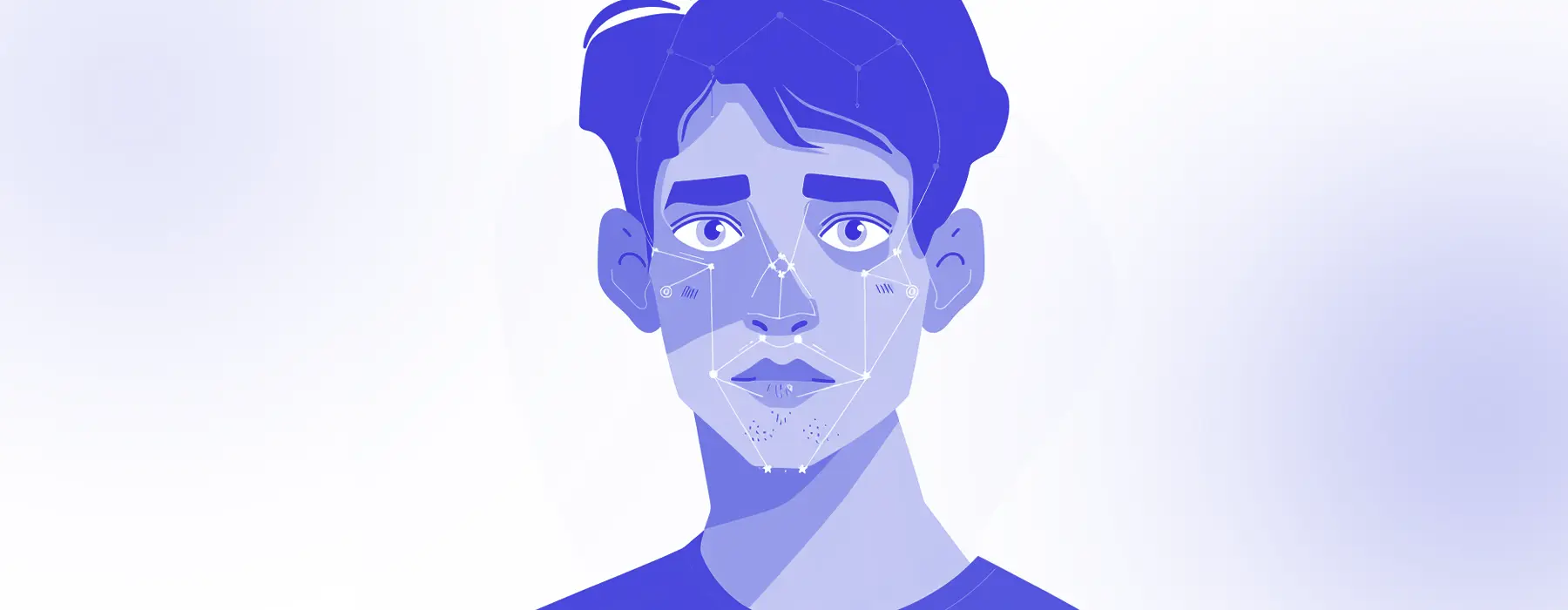

Oftentimes, OSINT investigations start off with limited entry data, such as a single photo of the person. You might search for either a location or a face match without having much information to begin with. Such a task can intimidate rookie researchers, but finding out more about a target by the photo can be easier with this guide. Learn how to do reverse image search, geolocate by a picture and do a face-based scanning with this concise X-Ray Contact tutorial.
Why You May Want to Identify Someone From a Photo?
The skill to successfully search for a person having just a picture can come in handy in different cases. Therefore, even if you do not need to do a reverse image search now, save this guide for later. Consider these situations when you might require searching for a person based on a photo:
- Handle Fraud Prevention. Organizations should use image identification to prevent identity theft or fraud of their employees. For instance, verifying the identity of individuals during online account setups can help prevent malicious activities.
- Do Employment Checks for the Candidates. The companies use photo identification to verify the identity of job applicants during the hiring process. It is especially important for positions that require background checks or security clearances.
- Facilitate a Journalistic Investigation. Reporters and investigators may use image identification to verify the authenticity of images or videos shared on social media platforms. Moreover, you can use images to expose individuals involved in newsworthy events.
- Find a Location From the Photo. You may be interested in disclosing the geolocation of the person based on the pictures you have at your disposal. It is possible by identifying landmarks, street signs or other recognizable features in the photo to determine the location with specialized instruments.
- Resume Communication With a Person. You might meet a valuable person for networking during an event but cease to exchange contacts. Searching for a person by image can be the only chance to find them if you don’t have any additional details such as name, email or number.
How Can You Find Pictures of Someone?
The first step in any research grounded on image analysis is to get access to the pictures of the target. In this case, even a superficial scanning of social media, forums or related websites can be a way to go. However, in addition, also consider using advanced image search options to automate the investigation and get more deep-cut results.
How Can I Find a Person With X-Ray Contact
X-Ray Contact is the most comprehensive means to collect a varied pool of information on the person, including photos. Compared to a typical reverse image search on Google, X-Ray Contact’s algorithm analyzes faces and looks for matches in databases from different providers. In case a person was identified successfully, you will receive the Search Profile with more photos as well as contacts, demographic information and relations.
Reverse Image Search
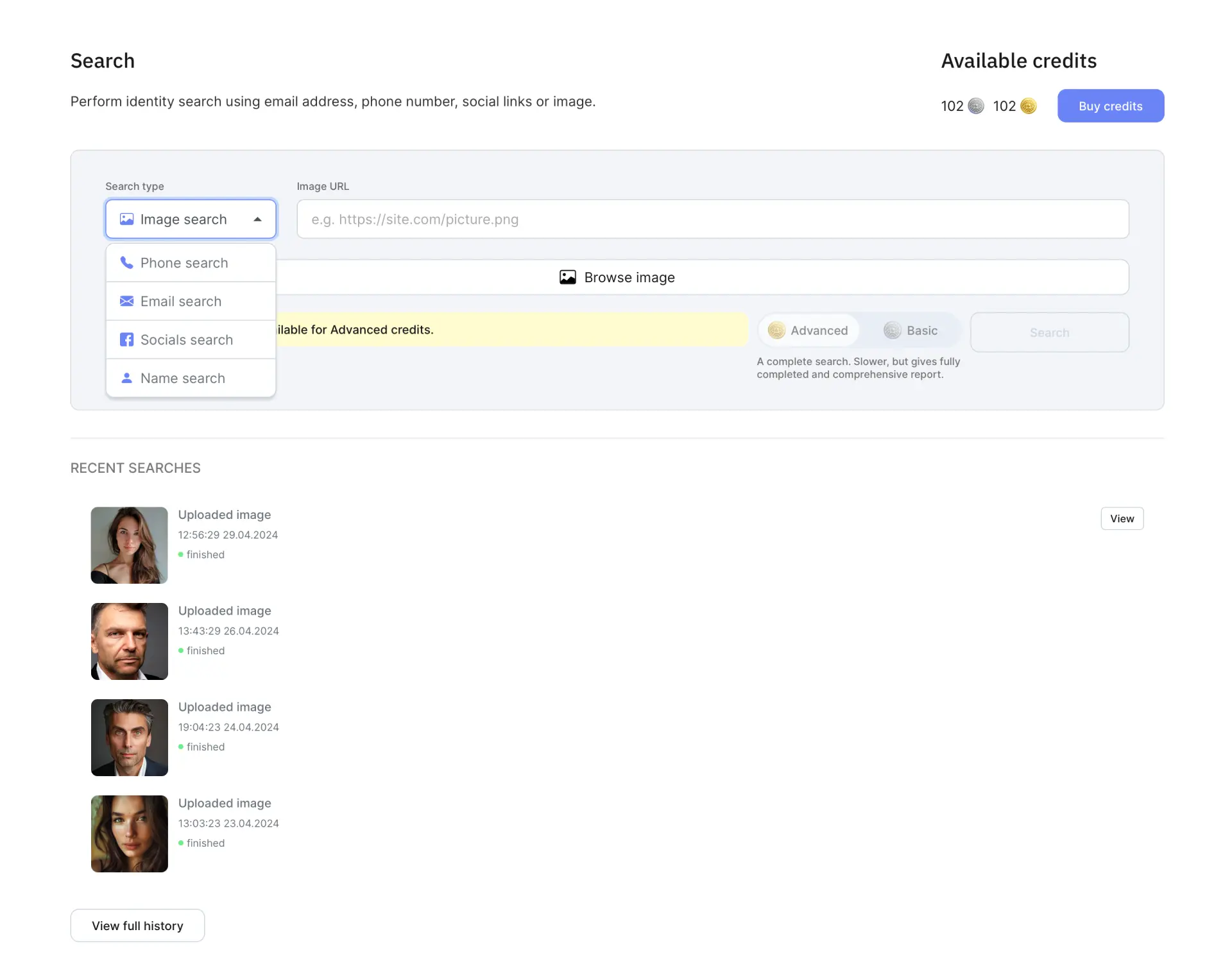
In order to search for a photo with X-Ray Contact, follow these steps:
- Create an account on the website in order to log in and kick off the investigation.
- Click on the “Platform” option in the site header. Select “Image” as your channel for investigation.
- Then, either upload a photo you want to research from your device or insert a URL if this picture is posted on the other website.
- If there are any matches, get an overview of the search results from different providers aggregated by the X-Ray Contact.
How to Find Someone with a Picture on Social Media
In order to augment your X-Ray Contact investigation or compare your findings in order to verify them, you can study each social media of a person manually. Pay attention to this overview for some of how to search through the most popular websites focused on posting photos.
How to Find Someone with a Picture on Facebook
Since Facebook is made for networking and exchanging life updates, it is suited for finding the most recent insights about the person. Even if the person doesn’t publish any new content themselves, you can scroll through their Facebook “Friends” list and search for whether they are discussed by their acquaintances. Use the image you already have in case you notice this person of interest on images from other profiles or groups.
How to Find Someone with a Picture on Instagram
The benefit of Instagram is that it is a photo content-focused social media that features immediate content like “Stories” that can reveal the appearance, new activities and geolocation of the person. Once on the target’s profile, you can explore their “Highlights” sections to see if they have posted any recent content that matches the picture you have. If the user has shared posts with geotags, you can click on the location tag to view other posts made at the same place. This can help you narrow down your search based on the places they have been based on their digital footprint.
How to Find Someone by Photo on Pinterest
Even though Pinterest is not so focused on up-to-date content like Facebook and Instagram, it can be an attention-worthy library of a person’s images. To do a Pinterest search, type in any descriptive information you have about the person, such as their name, username, location, interests, or any other relevant details. Then, you can explore their boards and pins to see if they have posted any content that resembles the picture you have on your hands. The images published by the user on Pinterest can reveal how the person’s appearance has changed throughout the years and enlarge the number of reference images you have.
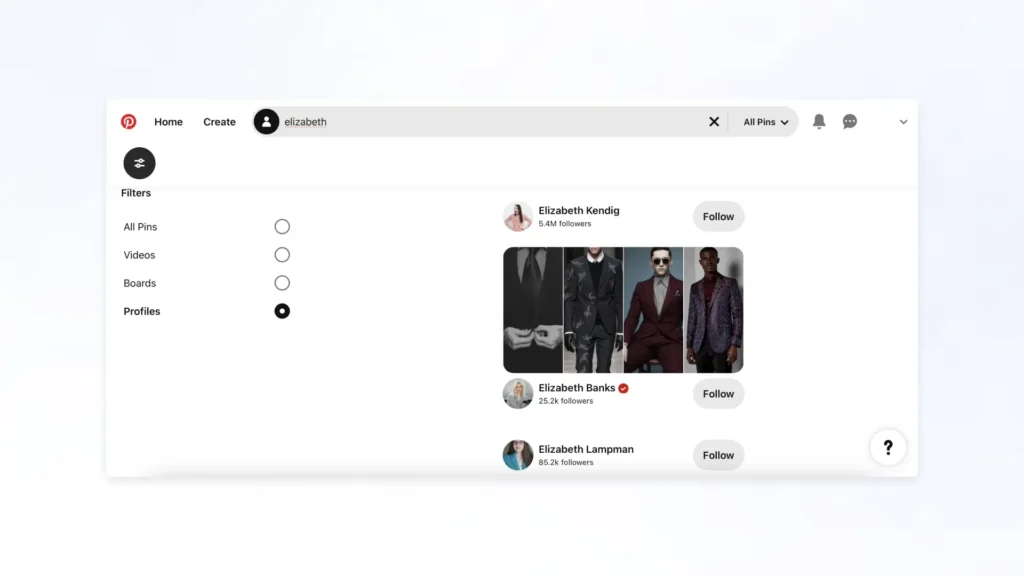
Find That Person in a Different Picture
Furthermore, don’t underestimate the usefulness of a simple reverse image search on Google to verify the results you have after doing more advanced scanning methods.
How to Do a Face Search on Google
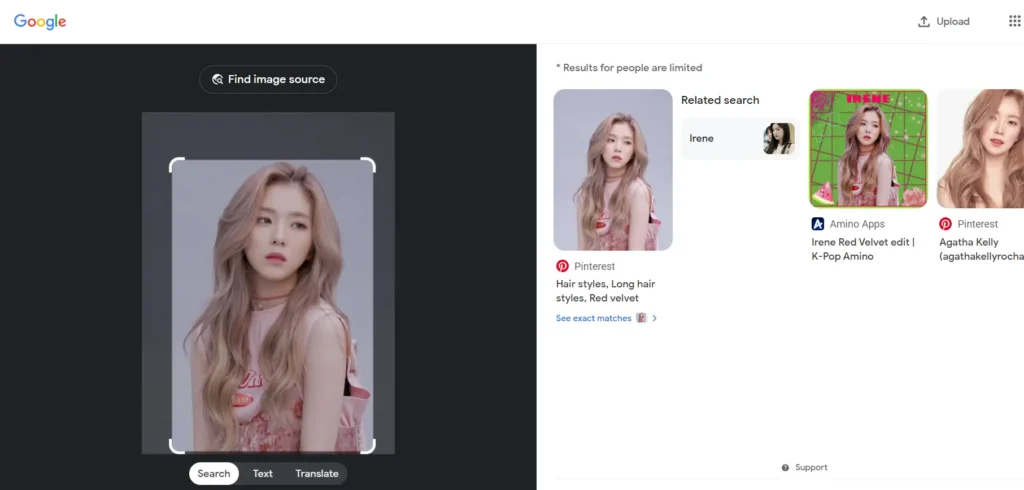
While X-Ray Contact’s algorithm does face analysis to identify potential matches, the search engine reverse function instead works only to find similar images posted on other websites. That’s why investigating a person’s photo is the most effective with X-Ray Contact, while Google search can aid in verifying the results. The research process is easy:
- After visiting the Google Images homepage, look for the camera icon in the search bar. Click on it to prompt two options: “Paste image URL” and “Upload an image.” Choose whichever suits you best.
- Then, Google will process your query and provide you with search results of visually similar or identical images found online.
- The search engine will display search reports that include websites, articles and other Internet content where the same or similar image appears. However, you also have to look through the results to find relevant matches manually.
- In order to better tune your request, you can also choose filters based on the time when the image was posted online or its size.
The Drawbacks of Reverse Image Search to Find Someone by Picture
However, in spite of how advanced AI and social media algorithms have become, be prepared that the search systems are still not perfect. Your image investigation might fail, especially in such cases:
Why You May Not Find This Person by Picture?
- Different Privacy Options. The user may have strict privacy settings on their social media profiles, so it can be difficult to locate them just based on their picture.
- Limited Online Presence. If the person you’re searching for isn’t active online, it may be challenging to find any relevant data about them.
- Fake or Altered Images. The picture you have might not be authentic, so it becomes harder to accurately identify the person. This fraud can be intentional, such as in cases of identity theft or catfishing.
The Difficulty of Trying to Find Someone by Picture
The task of searching for an image can be daunting due to the sheer number of things that can go wrong. Stay aware of the following pitfalls:
- The Danger of Inaccurate Metadata. Images often contain metadata such as timestamps, location information or EXIF camera details. However, this data can be easily manipulated or deleted, resulting in inaccurate leads.
- The Amount of False Positives. Reverse image searches may lead to inaccurate findings, matching the image with unrelated or incorrect information. Since technology is imperfect, you can waste a lot of time and resources to sift through results and verify the data.
- Restricted Database Coverage. Reverse image search engines rely on their databases to match images, but these resources are often limited. If the picture is not present in the database, it can be almost impossible to find a person online.
- Privacy Settings. Many social media platforms and websites have privacy settings that limit access to the users’ images. This condition can decrease the effectiveness of reverse image searches.
- Users Trying to Obstruct Identification. Some people might be afraid that their images can lead to the exposure of their offline identities, so they adopt measures to hinder the OSINT investigation. That’s why individuals can intentionally wear masks on photos and use filters that alter pictures or pose in ways that hide their faces from the search tools. Such obstruction techniques can complicate image recognition and make it challenging to locate the person by photo.
Geolocation: Fast Ways to Find Someone With a Photo
In some investigations, another snippet of information you can derive from the image is a person’s location details. Geolocation by image can come in handy in diverse research scenarios:
- Reveal the Lies. A person might claim to be in a different place than they really are to deceive or scam a user. Examine images with tools or resources to cross-check the claims said by the suspicious person.
- Find Missing People. Geolocation data can assist in locating missing persons by providing clues about their latest known whereabouts. This information can aid search and rescue efforts or boost investigations into disappearances.
- Prove the Claim. Identifying information by image can be used to verify the authenticity of social media posts, news articles or eyewitness accounts by confirming the location where an event occurred or where the person was.
- Construct a Geographic Investigation. Exploit an image of the location for the geographic information systems and mapping projects. It allows researchers to analyze spatial patterns, track changes in the environment or monitor urban development. Such use of images is especially useful for such purposes as military or police investigations.
Search a Person’s Location With X-Ray Contact
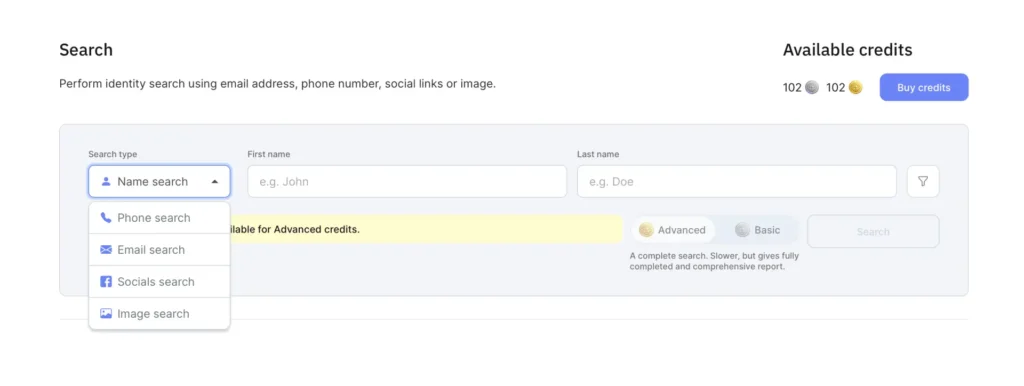
Just like in circumstances when you focus on finding a person’s face by photo, search with X-Ray Contact to reveal a target’s location. The key channel here is exposing social media with the tool to dig up cues about the place. Here is a swift breakdown of the main steps:
- Go to X-Ray Contact’s “Platform” page to begin geolocating a person.
- Insert any information you have about the image in the bar, such as a photo, name, email, etc.
- If the target’s data has been exposed to the X-Ray Contact’s providers, you will get a report with all the details we were able to find from different resources. Location can be one of them.
- However, in the situation when the tool managed to find social media profiles but could not pinpoint an exact location, use the links to continue the search. Some social media platforms like Instagram, Twitter or Facebook automatically geotag photos, adding location information based on the device’s GPS coordinates at the time of capture. Use these accounts to manually find the latest places tagged by the user of interest.
Finding People Using Image Metadata
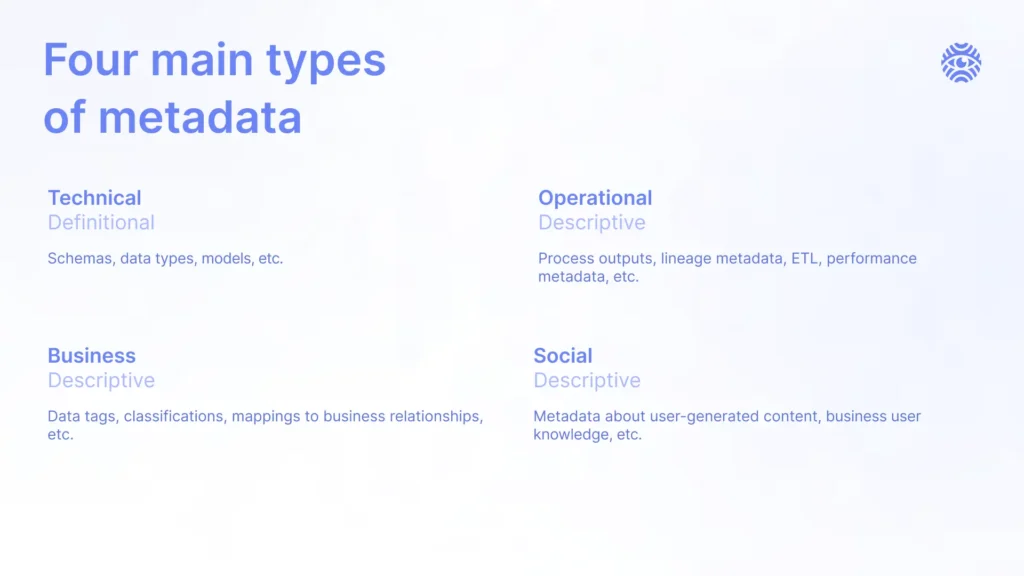
One standard way to expose a location by the image is by searching for the photo’s metadata. EXIF data can contain cues about GPS coordinates of where the photo was taken that may facilitate your investigation. Use tools like ExifTool or other online Exif viewers that are convenient to you in order to extract this information.
The next step after getting your hands on the GPS data is using it to search for more information about the place. In case the image contains GPS metadata, you can plug those coordinates into mapping software like Google Maps to pinpoint the exact location where the photo was taken. These steps can help in identifying landmarks or areas associated with the person in the photo.
What to Do After Finding a Person With Just a Picture?
If you followed all the steps correctly and employed a variety of tools, you might end up extracting all the information you were looking for from just a photo. However, the question is, what’s next? Let’s discuss the ways you can put your investigation results to good use:
- Expose and Report the Scammers. Double-check the information using multiple sources or methods to minimize the risk of errors. If you are sure that the user is a fraud, report the scammers to the relevant social media or even authorities, such as law enforcement agencies.
- Create Awareness. Collaborate with media outlets and share your search findings or warnings about the scammers with your network. You can post a report online and spread it so others don’t fall victim to the offenders.
- Monitor the Target. If you need to identify the target for your ongoing investigation, use new channels you’ve obtained to observe them in order to enrich your research. Take notes on how they tend to behave and whom they interact with online or record their digital footprint to find even more clues on the case.
Conclusion
In spite of all the insider details we’ve discussed about reverse image search and geolocation, don’t be afraid to try it out yourself. Even though amateur researchers might face challenges and obstacles along the way, it can be a valuable lesson on how to conduct OSINT, strengthen cybersecurity defense and fact-check things you see online.


